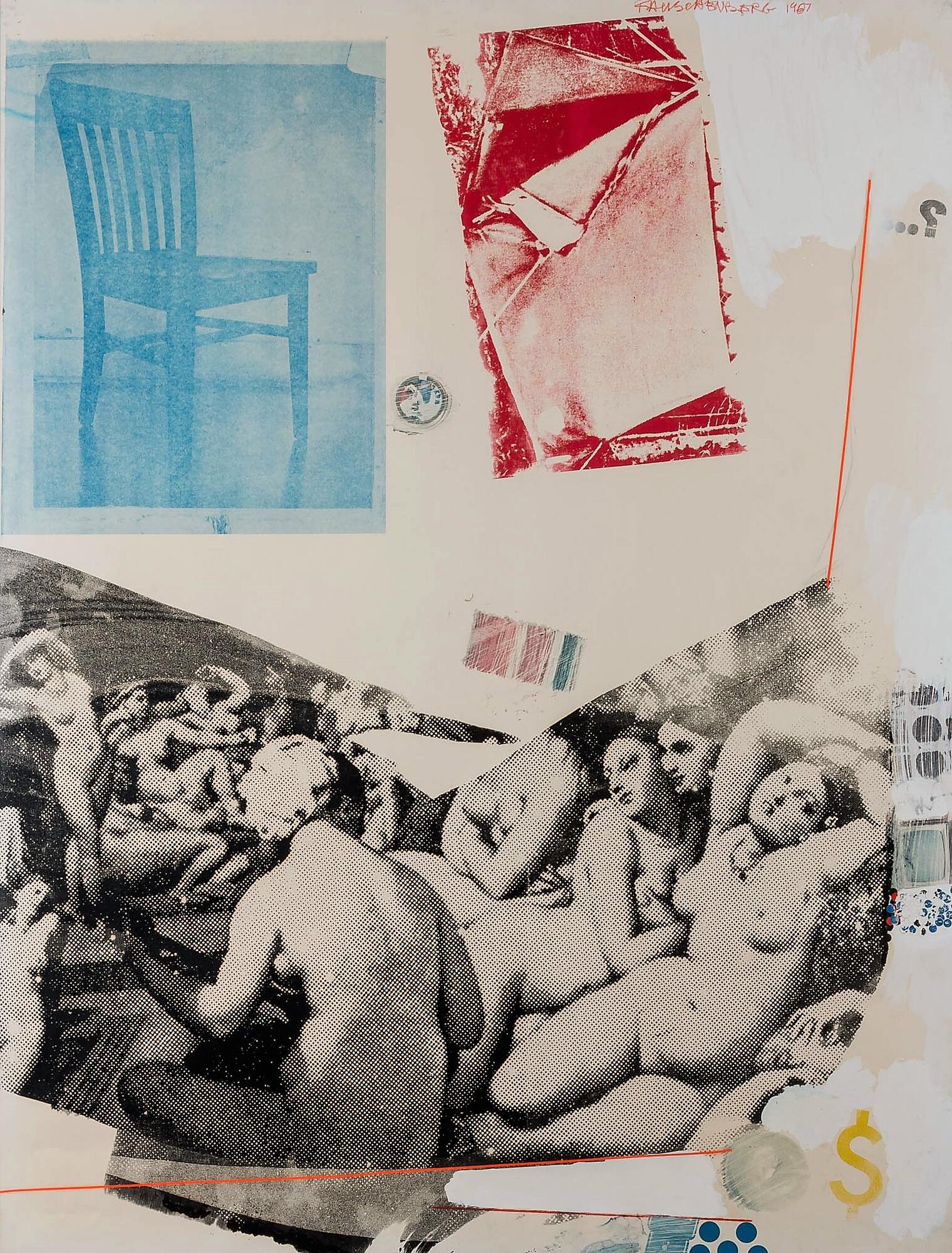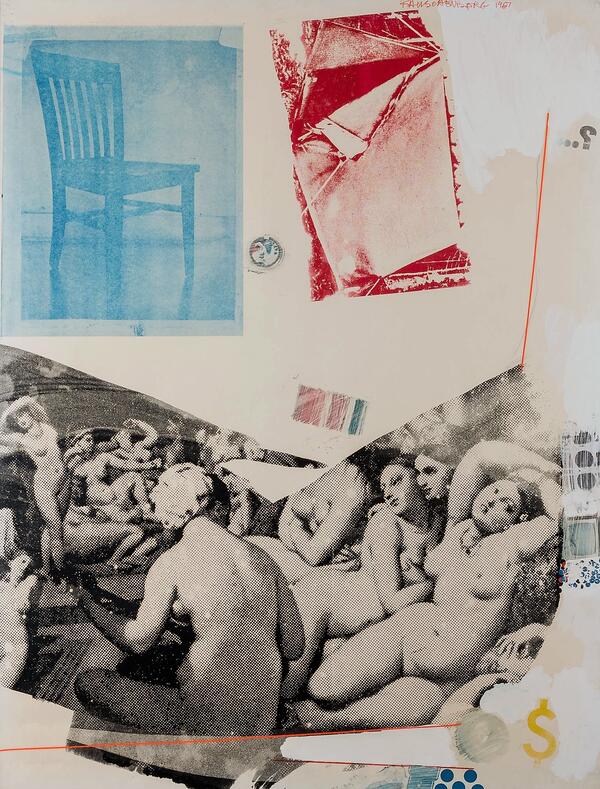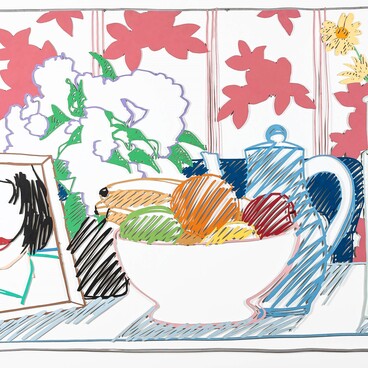In “The Turkish Bath of Ingres”, the artist Robert Rauschenberg used another artist’s works as a pictorial reference. The composition of the painting is based on a juxtaposition of photographs of everyday objects and a fragmented black-and-white reproduction of Jean-Auguste-Dominique Ingres’s “Turkish Bath” painted in 1862–1863. The author divided the reproduction of Ingres’s work into fragments and mirrored them. Rauschenberg admired this French artist and often quoted his works in his art.
Rauschenberg believed that both a painting and household items are of the same value, equally important. Granting the same rights to any image material was one of the main ideas in his work. The artist carefully considered the composition and balance of the fragments used, their coexistence in the pictorial space.
Robert Milton Ernest Rauschenberg is considered one of the main artists of the second half of the 20th century. In his work, he relied on the ideas of Marcel Duchamp, Joseph Cornell, Kurt Schwitters and other radical artists of modernism. Rauschenberg broke the boundaries between drawing and sculpture, painting and photography, photography and engraving, sculpture and dance, and sought to overcome the borderline between art and life.
In 1951, the artist completed a series of monochrome works, in which he experimented with the texture of the painting surface. In the 1950s, he also conducted his first experiments in the field of “pictorial combinations” (Combine painting), in which he combined objects with painting and collage. In the late 1960s, Rauschenberg paid attention to the so-called “found objects” — ordinary things incorporated among unusual objects or images.
In 1966, Rauschenberg founded the EAT (“Experiments in Art and Technology”) using technology in his artworks to create combined works. His favorite technique was the juxtaposition of mythological pathos with elements of everyday life. Improvisation was of paramount importance to him,
Rauschenberg believed that both a painting and household items are of the same value, equally important. Granting the same rights to any image material was one of the main ideas in his work. The artist carefully considered the composition and balance of the fragments used, their coexistence in the pictorial space.
Robert Milton Ernest Rauschenberg is considered one of the main artists of the second half of the 20th century. In his work, he relied on the ideas of Marcel Duchamp, Joseph Cornell, Kurt Schwitters and other radical artists of modernism. Rauschenberg broke the boundaries between drawing and sculpture, painting and photography, photography and engraving, sculpture and dance, and sought to overcome the borderline between art and life.
In 1951, the artist completed a series of monochrome works, in which he experimented with the texture of the painting surface. In the 1950s, he also conducted his first experiments in the field of “pictorial combinations” (Combine painting), in which he combined objects with painting and collage. In the late 1960s, Rauschenberg paid attention to the so-called “found objects” — ordinary things incorporated among unusual objects or images.
In 1966, Rauschenberg founded the EAT (“Experiments in Art and Technology”) using technology in his artworks to create combined works. His favorite technique was the juxtaposition of mythological pathos with elements of everyday life. Improvisation was of paramount importance to him,



